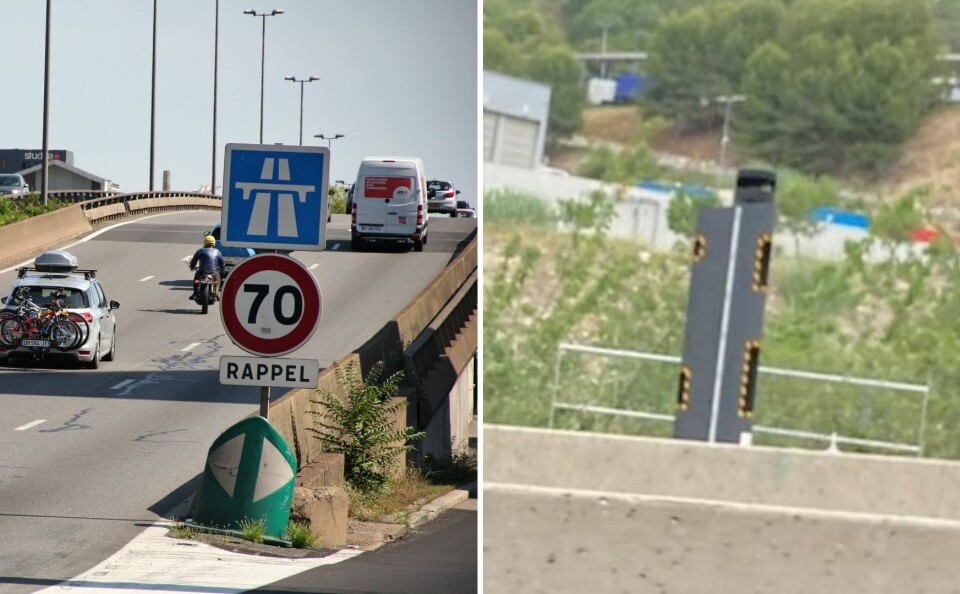-
Is French ‘malus’ tax being applied to second-hand cars?
Change was included in 2025 budget law
-
Departments in south-west France introduce tougher penalties for mobile phone usage when driving
Measure comes after record numbers of drivers caught using phones on the road
-
Farmer protests in France: Blockades in place on several major roads
Tractor convoys head for Paris ahead of a major protest planned for Thursday
Driving in France: new super-precise speed radars given go-ahead
They are said to be 100% accurate and could remove need for 5km/h ‘margin of error’ before fines are issued, but drivers’ group are angry at zero-tolerance policy

Drivers could find themselves hit with more tickets for driving offences after a new ‘super-precise’ speed camera was approved for use in May.
The small Nano Parifex, is placed on top of an existing camera, is made by a firm from Yvelines and is the first camera built using Lidar 3D 360-degree scanning technology to analyse and record drivers’ speed.
Read more: Sign replacement, new devices: Speed camera news for drivers in France
Can detect driver errors
It took six years of research and is said to be extremely accurate, potentially removing the need for the ‘error margin’ of at least 5km/h currently deducted from recorded speeds before fines are issued.
It analyses speed over a longer distance rather than just at one fixed point.
It can also analyse a host of other driving errors, such as crossing continuous white lines, not respecting Stop signs, and stopping distances.
So far, however, it has not been ‘homologated’ for such uses in France, though a request has been made by the firm.
Parifex puts forward its device’s precision and versatility as a plus for customers.
3D modelling and maths
Spokeswoman Mélissa Guimaraes called it “a breakthrough technology evolution among new-generation speed cameras”.
She said it is also easy and cheap to install.
It can be used in fixed radars as well as for mobile use.
The Nano, claimed to be almost 100% accurate, uses laser-sweeping to model in 3D the trajectory and speed from cars over more than 100m, with complex maths working out the average speed over the distance.
No room for error
The drivers’ organisation 40 Millions d’automobilistes says it is bad news for motorists.
Spokesman Pierre Chasseray said: “This is the symbol of a zero tolerance policy from the government. I fear that this high-precision speed radar could increase the number of non-dangerous speed tickets with an excess from 1-5km/h.”
Mr Chasseray said already 50% of speeding tickets are given within that range. Note, however, that at present an error margin of 5-6.5km/h is taken off the speed recorded by cameras before fines are issued or points docked.
Read more: Drivers in France may no longer lose licence points for minor speeding
However, he said he favoured the possibility of cameras punishing drivers crossing white (no-overtaking) lines, as he said this behaviour is dangerous.
Radars already installed
The Parifex Nano will be used in the first instance in ‘double-sided’ cameras, which usually look like a rounded column.
Some are already installed on top of these but until now have only been used to check the type of vehicle that is speeding, for example, if a moped and truck are both nearby. They will now be able to check the speed.
They are also being tested in the east of France in a new kind of radar called Nomad.
Ms Guimaraes confirmed Parifex was looking to obtain new homologations in the coming months to allow the Nano to assess behaviours such as white-line and stop-sign crossing and stopping distances.
They may also be used to check cars jumping red lights as part of a government policy to cut down on this.
Hundreds more cameras planned
France had more than 4,224 speed cameras as of January 1, 2021, the government agency handling driving tickets said.
The government says it aims for 4,700 operational cameras by the end of this year.
On top of the traditional ‘fixed’ cameras and déplaçable types, which can be set up by police ad hoc, France is making increasing use of mobile cameras.
These include ‘on-board’ versions which can be used in unmarked cars operated by private firms.
The latter, which use a doubled error margin, are expected to be deployed in all regions of mainland France by the end of this year.
Radars tronçons, which check average speed between two points over several kilometres, so cannot be ‘beaten’ by braking when a camera comes in sight, are another recent innovation.
In 2019, before the pandemic, cameras generated €760million for state coffers through fines.
Related articles
Recap: Beach flags, car black boxes, honey…ten changes in France
























